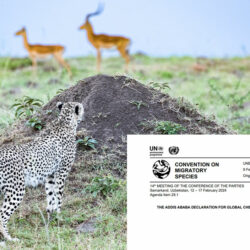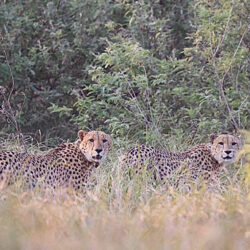Cheetahs Behind the Scenes and in the Public Eye
-

- by Patricia Tricorache October 25, 2018
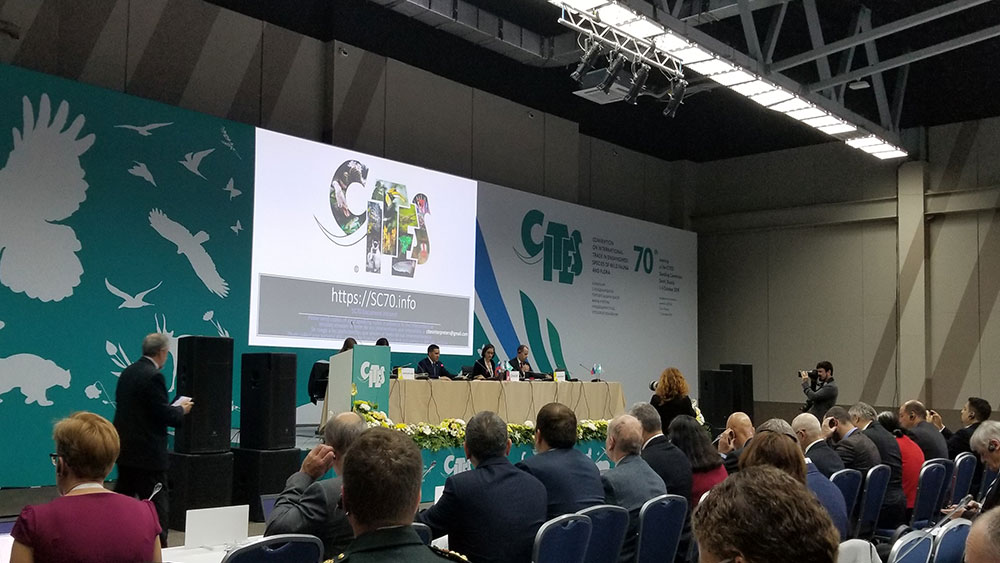
Somaliland
It’s been just nearly a month since I left Hargeisa, the capital of Somaliland. This was an emergency trip to help take care of cheetah cubs that had been confiscated a week earlier.
Taking care of young cheetah cubs is not for the weak of heart. You do all you can to keep them alive because they are so delicate. Everything can change from one moment to the next when it comes to cheetahs. On this occasion, two cubs had been illegally removed from their mother at about three weeks of age. That is way too young to be taken away from the sole being capable of providing the right nutrition and care. Imagine a human baby being removed from its mother at that age. That baby will have to fight immune and nutritional deficiencies, possibly for its whole life.
Not only was taking care of these cubs important, but our two-people team in Somaliland was suddenly in charge of 12 cheetahs and other confiscated animals, including six confiscated just a few weeks earlier. This made for a nearly impossible task. And this without considering the fact that our head caretaker, Neju, is also attending her last year of veterinary school. Help was crucial.
Given the poor health of the two little cubs, two females, our CEO, Dr Laurie Marker took a flight out of Namibia as soon as she could get a visa to enter Somaliland. Both cubs were delicate and needed constant care. Once there, Laurie made the decision of moving to a hotel to keep them quarantined and prevent any diseases that could be passed on to them from the other animals or even stray cats, which could worsen their already precarious situation. They were too young for vaccines. For almost a month, first Laurie and then I, spent days and nights in a room at the Adams Inn, providing round-the-clock care.
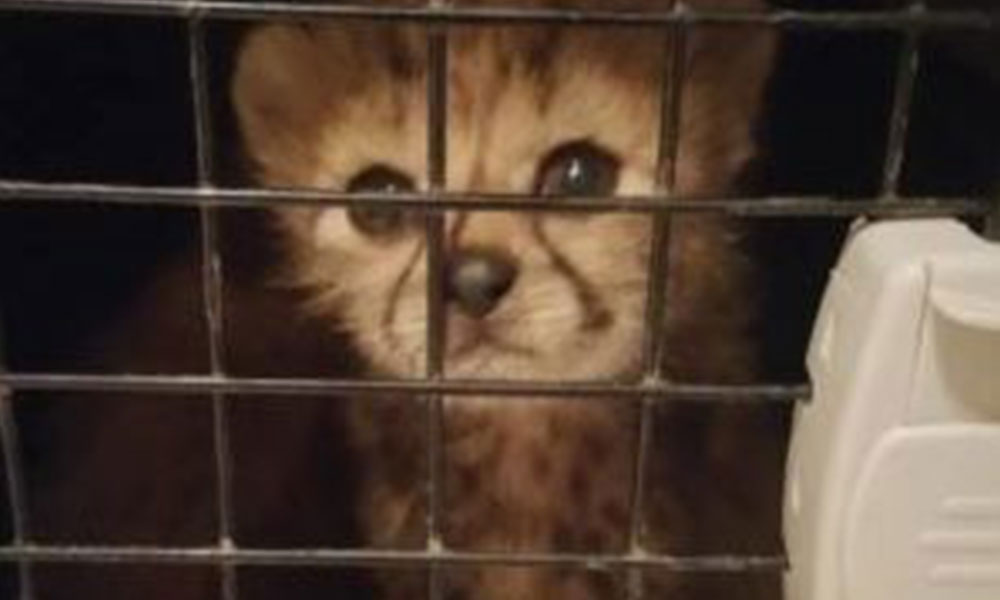
Sadly, one of the two cubs died a few days before I got there. Laurie did everything she could to keep her alive at no avail. She attempted CPR for a couple of hours and called a human doctor who brought oxygen. Nothing worked and after a few hours the little cub was gone. Her sister, whom Laurie named Light as a Feather, became a cause of constant concern.
On the last leg of my trip, from Dubai to Hargeisa, I met with Dr Hollis-Anne Stewart. Hollis used to work with us at the Cheetah Conservation Fund (CCF) in Namibia, and now works in Dubai. She kindly agreed to make a quick trip to Hargeisa with some much-needed supplies, and more importantly, her expertise. During her brief visit of less than 36 hours she examined all the newly-confiscated cubs, all seven of them. She made recommendations to Neju about their care; recommendations that I also heeded carefully.
I haven’t often been responsible for a cheetah cub this young, so I was very precise with keeping records and reporting back to Laurie and to Hollis. WhatsApp, which is often used by wildlife traffickers and dealers for their illegal activities, became our lifeline to keep little Feather alive, and we did. During the 16 days that I spent in Hargeisa, little Feather was well one moment and bad the next. I was constantly adjusting her formula and meat intake to get her to gain weight and improve her digestion. She started improving little by little and made me proud of her progress every time she devoured her food or displayed cheetah behaviors. By the time I left, she seemed fully recovered.
As for the other six cubs confiscated earlier in August, of different ages between 3 and 6 months of age, they also began to improve but needed a better space. They had been kept in an office building with one of our team members for lack of a better place. Luckily by the time I left Hargeisa, we were able to finalize the rental of a house with a very large yard, and the moving preparations began: cleaning the yard from trash, broken glass and thorny plants, building enclosures, and making the one large room on the property livable for Neju and little Feather. They both moved in the evening before I left. The little cub seemed to enjoy her new “digs” and did not show any signs of stress. I boarded that plane the next afternoon feeling very confident, and now, two weeks later, she has continued to thrive, and today I learned that she has doubled her weight.
But our brief respite didn’t last long. Just as I was boarding a plane again three days later to attend an international conference on wildlife trade, the 70th CITES Standing Committee meeting in Sochi, Russia, we were notified that three more cubs were about to get confiscated by the Somaliland Ministry of Environment and Rural Development. Just as Light as a Feather and her sister, these cubs were very young, approximately four weeks, and very skinny. The arrival of these three cubs represented a huge concern for all of us as we were sure they would require intensive care and our team, once again, had no help. Neither Laurie nor I were able to return; she was starting her US fundraising tour and I was on my way to Russia. Luckily, a former CCF volunteer, Jessica Martin, who has worked as a zookeeper for many years and has also been raising funds to support our work on illegal wildlife trade, was able and available to fly to Hargeisa to help with the new arrivals. A visa was immediately processed and four days later, Jess was responsible for the care of the three new arrivals.
The cubs at first seemed to be in better shape than little Feather and her sister. They were very skinny and dehydrated but had an appetite and their digestion appeared to be working fairly well. Emphasis at this point was on getting them used to the new food and put on weight. Everything seemed to be more or less steady. A little diarrhea here and there, but for the most part we were all cautiously confident. But just as we hoped these cubs would overcome the odds against them, a week after their arrival, the smallest of the three, Kulan, collapsed suddenly, with her temperature dangerously low. Efforts to warm her up and to hydrate her with warm fluids and glucose were in vain. Within 3 hours, at 1:30 am, she was gone.
It was a long night and our attention had to turn to the two surviving cubs. By morning, the remaining female, Kidi, collapsed and became completely unresponsive and comatose. The male, Galol, was not completely well but definitely better than Kidi.
Once again WhatsApp was our lifeline. Laurie in the US and I in Russia were in contact with the Hargeisa team nonstop, as well as with vets around the world, trying to help. This went on the entire day. One suggestion entailed an IV drip, but the vein was impossible to be found. One of the vets urged us to get protein into her body and to attempt tube feeding. This was the first time for the Hargeisa team tubing a cub, but they did a great job and Kidi was fed. This seemed to immediately make a difference and tubing was not needed again as she quickly became more alert and began eating without assistance. Once again, the night was tense waiting for news, but in the hope that things would get better. It wasn’t the case. Galol, the healthiest of the three, who was eating regularly and gave us less reasons to be concerned, also collapsed suddenly and died the next morning. The devastation we all feel cannot be overstated.
The team in Hargeisa has gone through all this tension and sadness, but yet continue to look after all the other cheetahs. Jess is looking after Kidi, who was close to dying yesterday but is showing slight improvement. Neju continues to look after Light as a Feather as well as the six cubs from early August and four other cheetahs confiscated in previous months.
CITES 70th Meeting of the Standing Committee
In Sochi, between constant communications with Somaliland, I had to focus on getting support to ensure that illegal cheetah trade continues to get attention in the context of CITES. As an agenda item for the 70th Standing Committee meeting, a report was issued by the Secretariat stating that the trade remains limited. Thankfully, by pulling together data from our years of research, we could demonstrate that this statement is far from real. We are so grateful to the other NGOs (Wildlife Conservation Society, Zoological Society of London, and Born Free Foundation) that worked with us for weeks leading to the conference, as well as the cheetah-range countries most concerned about the loss of wild cheetah populations to the illegal pet trade, and Yemen, the main point of entry for cheetahs illegally smuggled out of Africa. Our objective was to point out that official data provided by governments is insufficient to assess the magnitude of the trade, since a large percentage of it is not intercepted by the authorities. We must continue to insist in better enforcement, more convictions, better collaboration both regionally and inter-regionally in the affected areas, capacity building, and awareness to reduce demand for cheetahs as pets. It was a tense week, but when the issue was discussed in plenary, we were pleased to have very important interventions by the delegations from Ethiopia, Kenya, Botswana and the USA. While this might not change the original report, it will help us ensure that the issue doesn’t get lost. Now we must work towards preparing for the 18th Conference of the Parties, or CoP18, that will be held in May 2019.
Illegal Wildlife Conference – London 2018
As we continued to keep an eye on the cheetahs in Somaliland, I was getting ready to leave for London, where for the first time ever, non-governmental organizations were invited to participate in the Illegal Wildlife Trade Conference hosted by the UK government, along with dignitaries from over 80 countries. It was a profoundly moving experience to share space with people occupying the highest posts in many countries, corporations and NGOs, including His Royal Highness the Duke of Cambridge, the Presidents of Botswana, Gabon, Uganda and the Prime Minister of Cambodia, all sharing the same goal: to end wildlife trafficking.
The Conference, also for the first time, was not only about ivory or rhino horn and other wildlife products. The illegal trade in live animals was in the official program, and cheetahs were part of a panel session discussing this trade, emphasizing the need for immediate attention, a point that we made also via a pledge outlining the Cheetah Conservation Fund’s commitment to continue fighting against the illegal trade in cheetahs, whether as live animals for the pet industry or products, both on the supply and demand sides. To achieve this, we pledge to:
- seek every opportunity to raise awareness of this trade on every platform available to us, at national and international levels.
- join forces with governments affected by the trade, as well as with international and non-governmental organizations concerned with areas such as trade, legislation, enforcement, cyber-crime, education, community empowerment and animal welfare.
- share information to identify drivers of the trade in live cheetahs from the Horn of Africa to the Gulf Cooperation Council States (GCC), by using data from our years of research into trafficking cases and e-commerce and social media adverts.
This pledge is important because an estimated 300 live cheetah cubs per year are stolen from the wild in areas where wild populations are thin. Many more die before reaching the market. This outtake has the potential to decimate the wild cheetah populations of East Africa. The time to stop it is now.
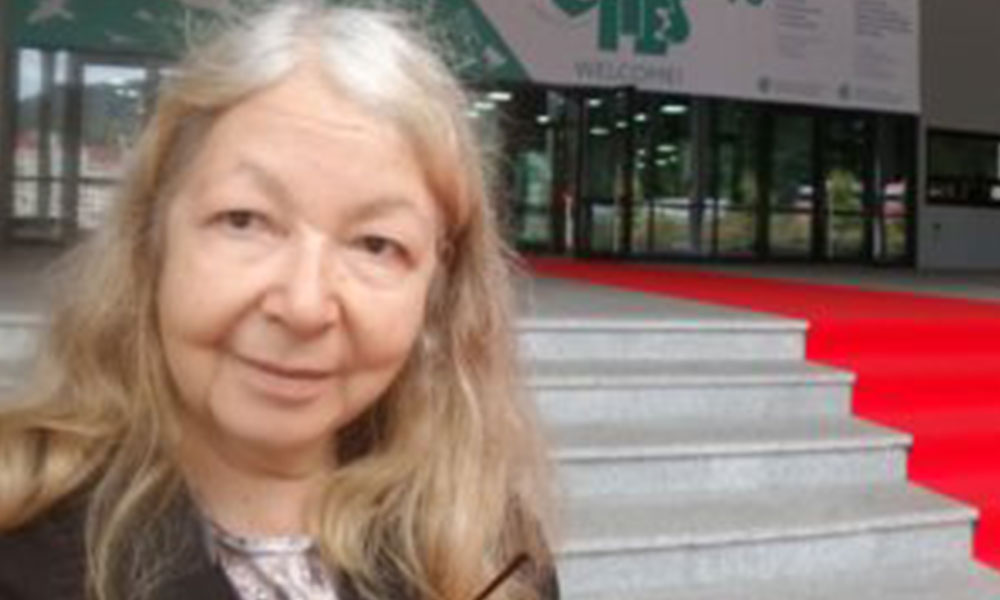
Related Reading
-
February 19, 2024
The Addis Ababa Declaration for Global Cheetah Conservation -
June 2, 2023
Project Cheetah Update

